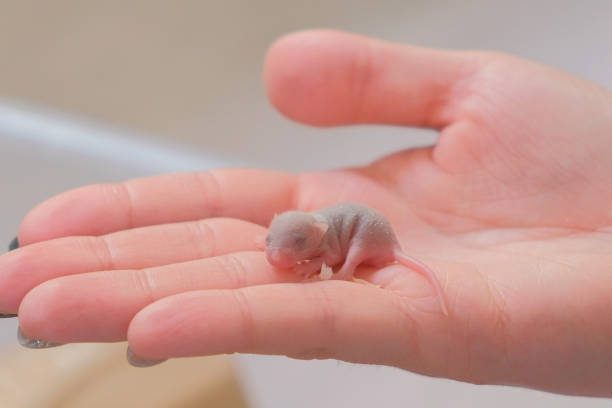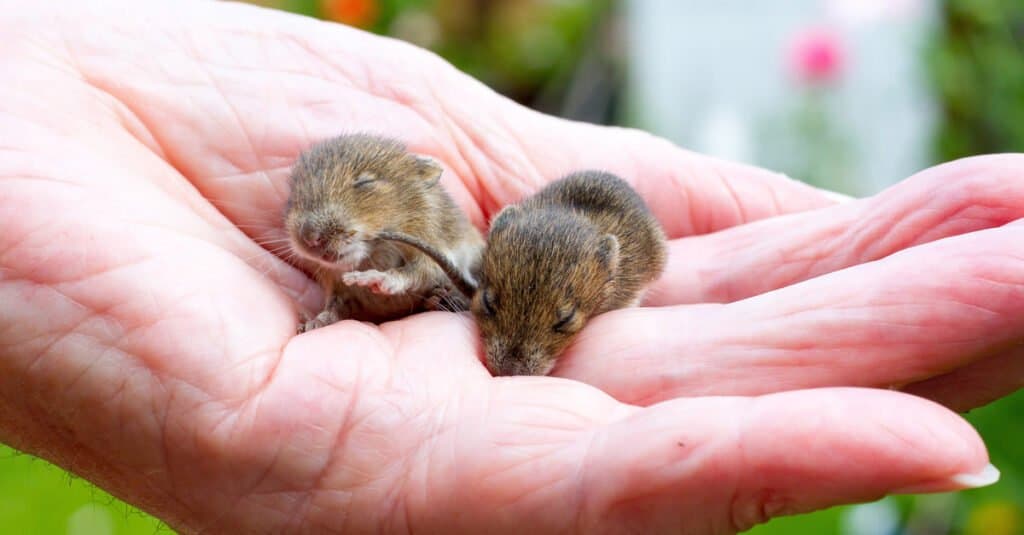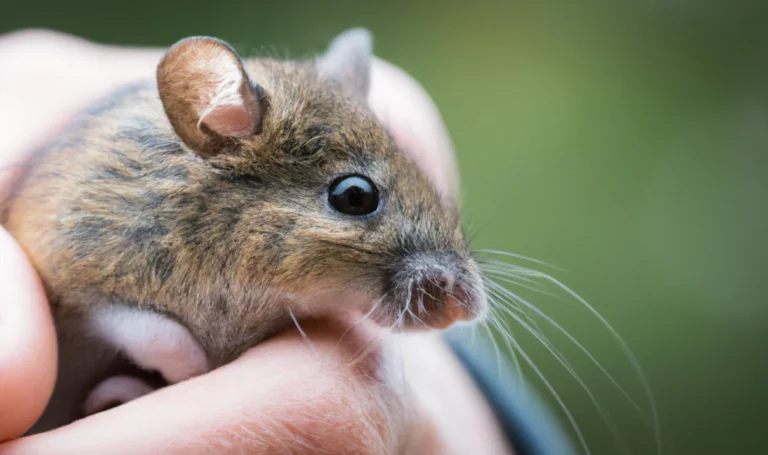Baby Mouse vs Baby Rat | Which is the Best Pet for You?
Overview
In choosing a pet, especially from the small rodents category, it is very crucial to differentiate between a baby mouse and a baby rat. Although they both are from the same group, rodents, they differ in their size, care, and behavior, and, of course, longevity. If you have an interest in adopting either a baby mouse or baby rat then this guide is going to be useful in aiding the decision making process.
What Are Baby Mice and Baby Rats?
To distinguish the two species, one has to first establish a general definition of baby mice and baby rats. They are both in the same family: Muridae, but while the babies of the Mus musculus species is termed as mice, the babies of Rattus norvegicus species is called rat.
- Baby Mice: Produce with small sizes and fine features, new born mice are usually born without hair, eyes and are incapable of moving on their own. In fact they develop to become small entities that can only be cared for during the early development stages.
- Baby Rats: Baby rats as compared to baby mice are larger in size, healthier and are capable of growing and maturing rapidly. Like mice, they are born without their sight or fur but they seem to be more sociable and are known to grow faster.
Top 10 Opossum Sounds and What They Mean
Key Characteristics of Baby Mice vs Baby Rats
To make it easier to distinguish between the two, it is now necessary to give special attention to some of the essential features that would help establish the difference between baby mice and baby rats appearance, activity, and other aspects of care.
| Feature | Baby Mouse | Baby Rat |
|---|---|---|
| Size at Birth | 0.5 to 1 gram | 5 to 7 grams |
| Size at 4 Weeks | 5 to 7 grams | 50 to 60 grams |
| Length at Birth | 2 to 3 cm | 4 to 5 cm |
| Length at 4 Weeks | 6 to 8 cm | 10 to 12 cm |
| Fur Development | Sparse fur after 1 week | Fur develops faster, around 1 week |
| Eye Opening | Eyes open at 10-14 days | Eyes open at 12-14 days |
| Social Behavior | Generally solitary, can be social in groups | Highly social and enjoy interacting |
| Lifespan (Approx) | 1 to 3 years in captivity | 2 to 3 years in captivity |
| Feeding Behavior | Primarily relies on mother’s milk until 3 weeks | Similar, but more active in eating solids sooner |
| Vocalizations | High-pitched squeaks | Low-pitched squeaks, more noticeable |
| Play Behavior | Less playful, more reserved | Playful, engages with siblings |

Size and Growth Rate: Baby Mouse vs Baby Rat
When it comes to trying to distinguish between baby mice and baby rats, one of the most distinct differences that will make the distinction quite apparent is size. The babies of rat are much larger than the babies of mice at the time of their birth. For a newborn baby rat, the weight is between 5 to 7 grams while a newborn mouse weigh only 0.5 to 1 gram. This size difference remains even as they develop since the two distinct settings nominate their respective levels of MMs. The baby rats weigh between 50 to 60 grams by the age of the four weeks despite the fact that the baby mice only weigh between 5 to 7 grams.
Why Does Size Matter?
- Ease of handling: The baby rats are easier to handle as the ones appearing sick since they are larger in size than the sick ones. Specifically, baby mice may be delicate and vulnerable to harm due to their small size and usually, they might need some care in handling.
- Caging: It is important to note that baby rats are larger than baby mice and should be placed in larger cages as opposed to baby mice which can be kept in small cages comfortably.
How Do Baby Mice and Baby Rats Look?
As already stated, both baby mice and rats are born pyrogenic naked, but they are not albinos, and as they grow, they differ in their appearance that, in some ways, looks quite astonishing.
- Baby Mice: Compared to the full grownees, the baby mice are relatively young and as such have the small features like small ears. After one week, they grow a thin fur coat on their tail and it is thin as well.
- Baby rats: are usually smaller than the adult rats but the differences are not very distinct rat has rather large ears, thicker tail and more defined body contour than a mouse. It is associated with velvety fur development, which emerges within a week to provide them with a more developed appearance than baby mice.
Behavior and Socialization: Baby Mice vs Baby Rats
The main differences in behavior between the baby mice and baby rates are however much more distinctive than those in physical structure.
- Baby mice: Are more shy and sluggish in their movements as compared to adult mice. It is even less social than the common rat especially during their development to adulthood. They are rather less playful than the male young-of-the-year and do not venture far from their mother.
- Pregnant Rats: Baby rats are social animals and especially the new born will start to play with the other babies. They are more inquisitive, playful, and social in engaging themselves in activities and/or with the caregivers.
Play and Interaction
While both baby mice and baby rats are social animals, the former is not as playful as the latter. They prefer a form of low profile in their investigations of the environment.
Rats: These little and cute animals are very playful ones. They will both play with one another and the human caretakers hence being appropriate for people who are looking for a rodent that they can engage in playing with.

Feeding and Care: Baby Mouse vs Baby Rat
While both baby mice and baby rats still cannot be weaned yet and depend on the mother’s milk. Both begin to lose dependency on their mother and they start taking baby foods.
They start getting adapted to solid foods from the time they are three weeks of age. Their diet is comparatively small portions of fruits and vegetables as well as grains.
They are small in size and are generally weaned at the age of fourteen days and start eating on solid foods slightly earlier than mice. It is thought to be more active than the first type of eaters and will switch to different foods once they begin weaning.
Cage Requirements
The mice should be placed in smaller cages but they require a lot of materials for them to burrow into as well as free space to move about the cage.
Baby rats: These rats should be housed in much bigger cages, with sufficient space for climbing/Exercise. Tunnels and toys should be provided to them to enable them have some body and mind challenge.
Lifespan | Baby Mouse vs Baby Rat
The two baby animals, mouse and a rat, live very short lives as compared to the lives of human beings but there is some difference between the two types of baby animals.
- Baby Mice: Mice are known to have a life span of 1 to 3 years depending on different factors that surround them.
- Baby Rats: Similar to other rodents, rats also live for 2 to 3 years only though it can live longer in case of being domesticated.

Which is the Best Pet for You?
The decision to take care of a baby mouse or a baby rat depends with the capacity of the individual and the type of animal preferred.
- Baby Mouse: Even more desirable for people who do not have a lot of time for disposition with the pet, who prefer a small, more independent pet, than baby mice would be ideal for you.
- Baby Rat: In case, you are in search of a bigger size pet that is lively and possesses higher social interactivity then baby rats are better. Their playful behavior provides a good company to those people who need a pet to keep them company.
Conclusion
The behaviors of baby mice and baby rats since both of them are cutting little creatures that can capture people’s hearts. The babies of rats are larger and more social and are able to grow and mature faster than mice babies, yet, on the other hand, the mouse babies are very small, rather more independent, and are less vocal or noisy compared to the babies of rats. This will highlight some essential factors to aid in deciding on a particular rodent as a pet depending with their compatibility level with the individual’s lifestyle.
More Read=Baby Rat vs Mouse: All You Need To Know | Critter Stop







